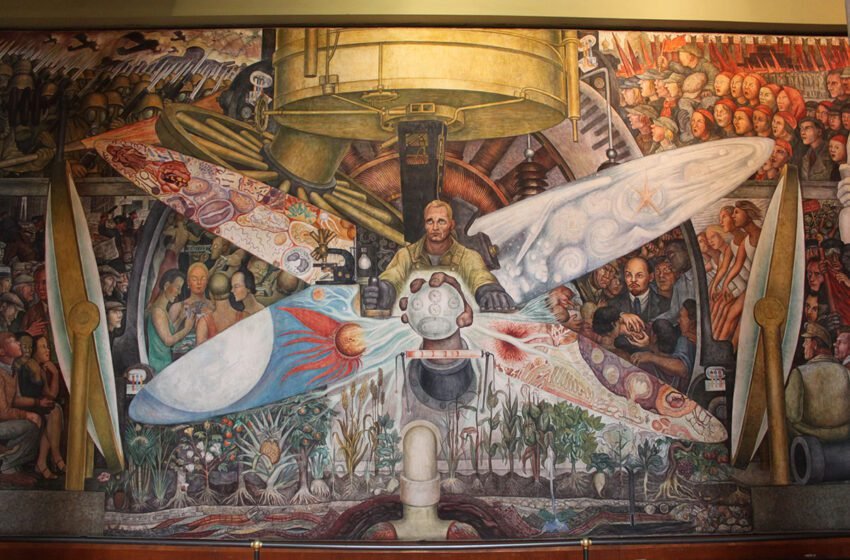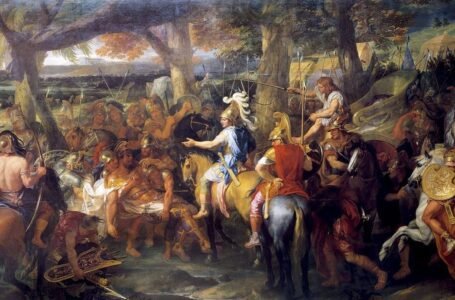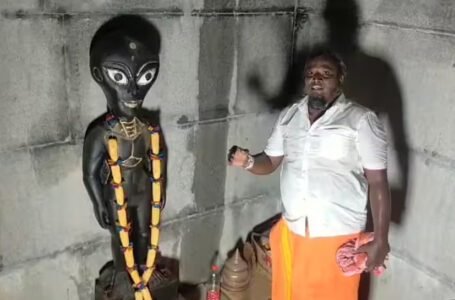Mexican Muralism: The Art Movement That Transformed a Nation

Mexican Muralism was one of the most influential artistic and cultural movements of the 20th century. It emerged in the aftermath of the Mexican Revolution (1910–1920) as a powerful means of national reconstruction and education. The movement aimed to bring art to the public, educate the working class, and celebrate Mexico’s indigenous heritage and revolutionary struggles. Unlike traditional Western art, which was often displayed in museums, palaces, and private collections, Mexican Muralism turned public buildings into canvases, ensuring that art was accessible to all.
This movement was led by Diego Rivera, José Clemente Orozco, and David Alfaro Siqueiros, three artists whose monumental murals transformed Mexico’s urban landscape. Their works depicted Mexico’s history, social struggles, and the role of indigenous and working-class people, creating a new artistic identity that rejected European colonial aesthetics.
Mexican Muralism was not just an artistic movement—it was a political statement. The murals criticised imperialism, capitalism, and oppression while promoting the ideals of socialism, indigenous empowerment, and national pride. The movement became a global inspiration, influencing public art projects and revolutionary movements worldwide, from the United States to Latin America and beyond
Historical and Political Background of Mexican Muralism
Mexican Muralism was deeply connected to the country’s tumultuous history, particularly the Mexican Revolution. Before the revolution, Mexico was ruled by dictator Porfirio Díaz (1876–1911), who favoured European culture and wealth over indigenous traditions and the working class. Under his rule, land, wealth, and power were concentrated in the hands of a small elite, while the vast majority of Mexicans—especially indigenous people and peasants—lived in poverty.
The revolution (1910–1920) aimed to overthrow Díaz and redistribute land to peasants, but it resulted in a decade of brutal warfare between different revolutionary factions. By the 1920s, Mexico was in desperate need of unity and national identity. The new government, particularly under President Álvaro Obregón (1920–1924) and Education Minister José Vasconcelos, saw art as a tool for rebuilding the nation and educating the people.
Vasconcelos believed that murals could serve as a “people’s school,” educating the masses about their history, identity, and revolutionary ideals. The government funded massive mural projects, allowing artists to paint on the walls of government buildings, schools, and public spaces. This transformed cities into open-air museums where Mexicans could engage with their history and culture every day.
Mexican Muralism was also influenced by socialist and communist ideologies, particularly after the Russian Revolution (1917). Many muralists, especially Rivera and Siqueiros, were communists who saw art as a weapon for class struggle. They painted murals that glorified the working class, criticised capitalism, and promoted socialist revolution, aligning themselves with global anti-imperialist movements.
Key Themes and Characteristics of Mexican Muralism
Mexican Muralism developed a unique artistic language that distinguished it from previous art movements. Its key features included:
- 1. Monumental Scale
Mexican murals were grand in scale, covering entire walls of buildings. This made them impossible to ignore, ensuring that their messages reached a wide audience.
- Vivid Colours and Dramatic Composition
The muralists used bold, vibrant colours to reflect Mexico’s indigenous artistic traditions. They also adopted dynamic compositions filled with movement and energy, making the murals visually engaging.
- Celebration of Indigenous Culture
Unlike colonial-era art that favoured European influences, Mexican murals prominently featured Aztec, Maya, and other indigenous cultures, celebrating their history, traditions, and resilience. This was part of a broader effort to reject European cultural dominance and reclaim Mexico’s pre-Hispanic identity.
- Political and Social Themes
Many murals served as socialist propaganda, calling for class struggle and revolution.they often depicted:
- The struggles of the working class and peasants
- Exploitation under colonialism and capitalism
- Revolutionary leaders and social movements
- Indigenous and mestizo identity
- 5. Fusion of Realism and Symbolism
While the murals depicted real historical events, they also incorporated symbolic imagery. For example, Rivera often used allegorical figures to represent oppression and liberation, blending realism with abstract social commentary.
The Pioneers of Mexican Muralism
Diego Rivera : man who depicted the working Class
Diego Rivera is the most famous Mexican muralist, known for his detailed, narrative style that depicted history from the perspective of workers and indigenous people. His murals were highly political, reflecting his Marxist beliefs and criticism of capitalism and imperialism.
Rivera was influenced by Renaissance frescoes, post-impressionism, and cubism, but he adapted these styles to create murals that were uniquely Mexican. His works often included huge crowds, historical figures, and revolutionary imagery, creating a sense of movement and struggle.His famous Works include
- “The History of Mexico” ) – A massive mural in the National Palace that illustrates Mexico’s history from the Aztec empire to the Mexican Revolution.
- “Detroit Industry Murals” – A series of murals in the Detroit Institute of Arts, portraying industrial workers as heroic figures.
- “Man at the Crossroads” – A mural for Rockefeller Centre in New York, destroyed because it featured Lenin and communist symbols. Rivera later repainted it in Mexico as “Man, Controller of the Universe.”
José Clemente Orozco The Tragic Vision of History
José Clemente Orozco was known for his darker, more pessimistic vision of history compared to Rivera. While Rivera celebrated the potential for revolution, Orozco focused on its violence, suffering, and contradictions. His works were often somber, emotionally intense, and highly expressive, using bold lines and dramatic lighting to convey human agony.
Unlike Rivera, Orozco was not as explicitly communist in his politics; instead, he explored universal themes of oppression, war, and human resilience. He was particularly critical of fanaticism, dictatorship, and blind violence, warning that revolutions could become as oppressive as the regimes they overthrew.
His Famous Works include
- “The Epic of American Civilisation” (1932–1934) – A mural at Dartmouth College in the U.S. that critiques both European colonisation and industrial capitalism while depicting indigenous history.
- “Prometheus” (1930) – A mural at Pomona College, showing the Greek titan bringing fire (knowledge) to humanity, symbolising the struggle for enlightenment.
- “Man of Fire” (1939) – A mural in Guadalajara, portraying a man consumed by flames, representing the destructive and transformative power of revolution.
Orozco’s art, though revolutionary, carried a sense of tragedy, emphasising the costs of struggle and the human suffering that comes with social change.
David Alfaro Siqueiros : The Revolutionary Fighter
David Alfaro Siqueiros was the most radical and militant of the three great muralists. A devoted communist and soldier, he saw art as a weapon for revolution. His murals were dynamic, aggressive, and experimental, incorporating modern techniques such as spray painting and industrial materials.
Siqueiros often painted from extreme angles, creating a sense of movement and urgency, as if the viewer was caught in the middle of a battle. His figures were monumental, muscular, and dramatic, symbolising the strength and unity of the working class.
He was deeply involved in political activism, even participating in an assassination attempt on exiled Russian revolutionary Leon Trotsky in Mexico City (1940). His militant politics got him imprisoned multiple times, but he continued to paint powerful murals advocating for revolutionary struggle.
Famous Works:
- “Portrait of the Bourgeoisie” (1939–1940) – A mural inside a Mexican electrical workers’ union, showing capitalism as a machine crushing the working class, with fascist leaders controlling the system.
- “The March of Humanity” (1965–1971) – One of the largest murals in the world, located in Mexico City, depicting the oppression of humanity under capitalism and the promise of socialist revolution.
- “Death to the Invader” (1942) – A mural in Chile supporting anti-imperialist struggles, showing indigenous warriors resisting European conquest.
Siqueiros was an artist-warrior, dedicated to using murals as a battlefield for socialist ideology. His works were bold, confrontational, and unapologetically revolutionary.
Impact of Mexican Muralism on the World
Mexican Muralism had a profound influence beyond Mexico, inspiring public art movements worldwide. It demonstrated that art could be used as a tool for social change, leading to the rise of political murals in the United States, Latin America, and even Europe.
During the 1930s, many Mexican muralists—especially Rivera and Orozco—were invited to paint murals in the United States. Their influence shaped New Deal-era public art projects, particularly those funded by the Works Progress Administration (WPA). American artists such as Jackson Pollock and Charles White were deeply inspired by Mexican Muralism, adopting its social themes and large-scale formats.
Inspiration for Chicano Art
In the 1960s and 1970s, Mexican Muralism became a major influence on the Chicano movement in the U.S. Latino artists painted murals in Los Angeles, San Francisco, and Chicago, using public spaces to express Chicano identity, civil rights struggles, and indigenous heritage. Murals like those in East Los Angeles and San Diego’s Chicano Park directly followed the tradition established by Rivera, Orozco, and Siqueiros.
Muralism in Latin America and Beyond
Mexican Muralism inspired similar public art movements in Cuba, Chile, Nicaragua, and Argentina, where revolutionary movements used murals to promote socialist and anti-imperialist messages. Even in Europe, artists adopted muralism as a form of resistance against fascism and authoritarian regimes.
The Legacy of Mexican Muralism
Mexican Muralism remains one of the most powerful examples of art as a tool for revolution and social justice. Its legacy can be seen in street art, graffiti, and political murals worldwide.
While the movement declined after the 1950s, its influence continues. In modern Mexico, murals still decorate public spaces, carrying messages about social justice, indigenous rights, and national pride. The ideas of Rivera, Orozco, and Siqueiros live on in contemporary movements such as urban muralism, street art, and politically engaged public art.
Mexican Muralism proved that art does not have to be confined to galleries or private collections—it belongs to the people. By turning walls into history books and public squares into classrooms, it gave art a social purpose that continues to inspire artists, activists, and revolutionaries around the world.


